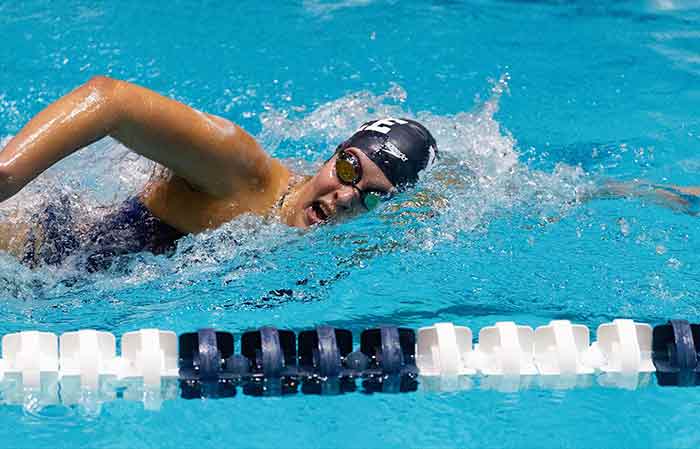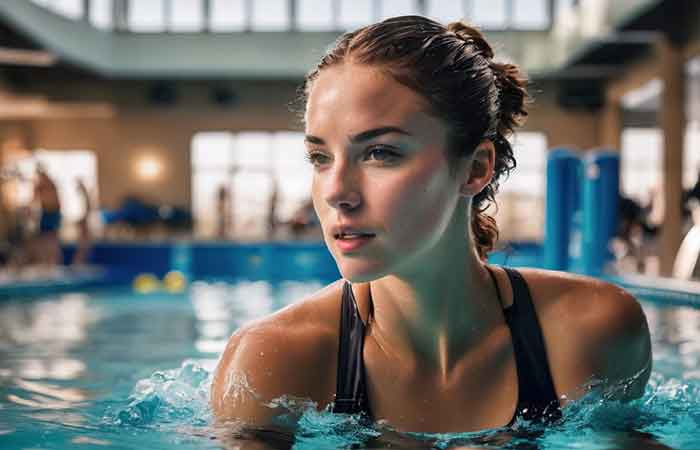Is Swimming a Hard Sport? Unveiling the Challenges!
Even though being in water might conjure up images of leisurely laps in the pool or relaxing dips in the ocean, swimming is hard, particularly at the competitive level. It demands physical strength, technical finesse, mental toughness, and a dedication to training.
However, for recreational purposes, swimming can be an extremely accessible activity because of its low-impact nature and adaptability across different skill levels. It is a fun and relaxing way to stay active and cool off significantly during summer.
Following is a discussion of this sport’s physical and mental demands, shedding light on why it’s considered one of the most challenging.
The Physical Demands of Swimming
Swimming requires precise technique and form and the ability to navigate water resistance and varying temperatures.
Technique and Form
Swimming requires you to move in a special way. It is not like walking or running. Each stroke has its style and speed. Your arms, legs, and body must move together correctly.
This is called the “form”. Good form helps you swim faster and use less energy. You must also keep your head low and your body flat. This stops water from slowing you down. Learning good technique and form can be hard, but it’s key to being a great swimmer.
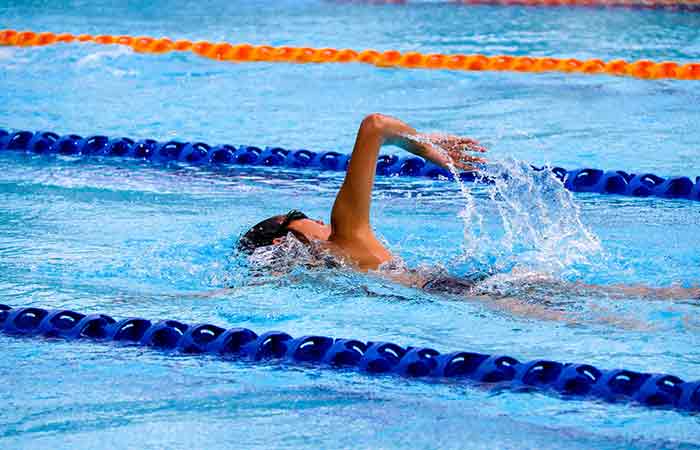
Water Resistance and Temperature
Swimming uses water as a tool. Water pushes back hard when you try to move through it fast. This push or pull is called water resistance. The density of water, which is much higher than air (by about 800 times), provides resistance, demands more energy and makes you work harder.
The water also has its temperature, which can make swimming more challenging. Cold water can slow you down and use up more of your body heat. Warmer waters may tire you out faster because they make the heart pump blood quickly.
Strength and Endurance
Swimming takes a lot of strength and endurance. This sport uses every muscle in your body. Your arms, legs, and core help you move through the water. Over time, this makes your muscles very strong.
But swimming is not just about strength. Endurance is vital, too, because swimmers exercise for long hours without stopping. This helps to burn a lot of energy – even up to 5,000 calories during tough training! Swimming keeps asking more from your body as it fights against the water’s pushback.
So yes, both grit and stamina are big parts of this sport! They keep you going when it gets hard.

Coordination and Balance
Swimming requires excellent coordination and balance from athletes. In the water, swimmers must synchronize their movements to maintain a steady rhythm and maximize speed. It’s not just about moving arms and legs; they must also coordinate their breathing with each stroke.
Balancing their body position in the water is crucial for streamlining and reducing drag. Without proper coordination and balance, swimmers may struggle to maintain an efficient technique, resulting in slower times and wasted energy.
Effects on the Body (Hunger, Fatigue, Skin and Hair Damage)
Swimming can have various effects on the body, including hunger, fatigue, and potential damage to the skin and hair. Due to the intense physical demands of swimming, athletes often experience increased hunger as their bodies require more fuel energy.
Additionally, swimmers may feel fatigued after rigorous training sessions or competitions due to the high energy expenditure involved in swimming. Over time, continuous exposure to chlorine and other chemicals in pool water can lead to skin dryness and irritation.
Similarly, frequent exposure to chlorine can make hair dry and brittle. However, these effects can be minimized by adequately nourishing and hydrating the body before and after swimming sessions and using protective products for skin and hair care.
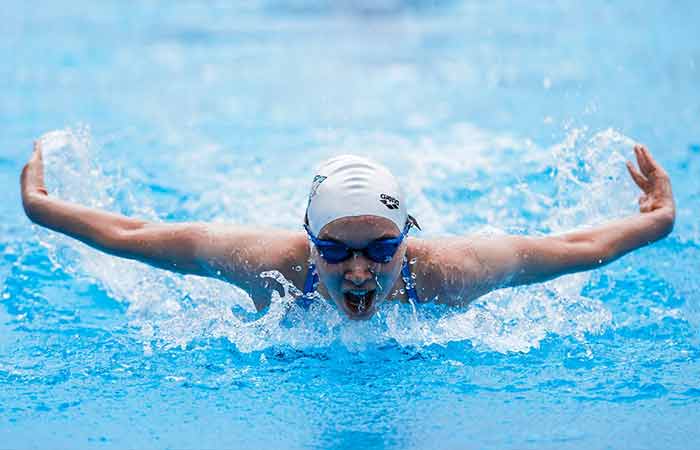
The Mental Demands of Swimming
Swimmers must overcome their fear of water, stay motivated, exhibit mental toughness and concentration, and set goals to improve continuously.
Overcoming Fear of Water
Swimming can be a daunting sport for those who have a fear of water. Overcoming this fear is crucial to enjoy and participate in swimming fully. It requires patience, determination, and gradual exposure to water activities.
Small steps like getting comfortable in the shallow end or using flotation devices can help build confidence. Learning proper breathing techniques and gaining trust in the water are crucial to overcoming this fear.
With practice and support, individuals can conquer their fear of water and unlock the many physical and mental benefits of swimming.
Staying Motivated
Staying motivated in swimming is crucial to overcoming challenges and achieving success. Swimmers must find ways to keep themselves inspired, especially during tough training sessions and competitions.
Further Reading: Why Swimming Sucks: The Risks and Dangers
Visualizing their goals, setting targets, and reminding themselves of the benefits of swimming can help maintain motivation. Having a support system, such as coaches and teammates, also significantly keeps swimmers focused and driven.
Furthermore, celebrating achievements along the way can boost motivation and maintain enthusiasm for the sport. Swimming requires mental toughness and determination, but with the right mindset and strategies for staying motivated, swimmers can push through any obstacles they face.
Mental Toughness and Concentration
Swimming requires not only physical strength but also mental toughness and concentration. Swimmers must stay focused and motivated, even when faced with fatigue and discomfort.
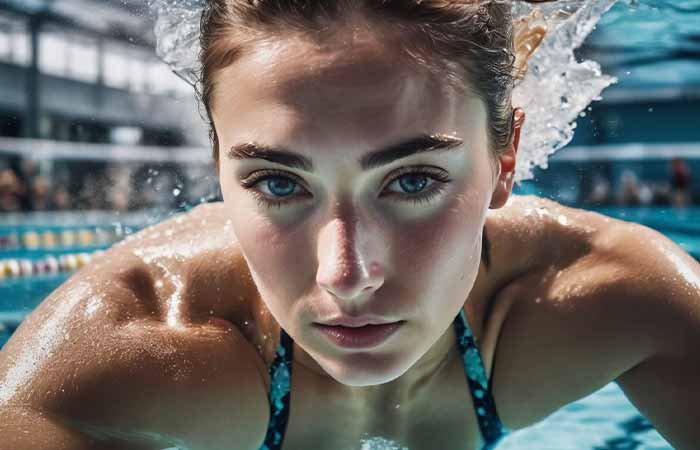
It takes determination to push through mental barriers and maintain a high level of performance in the pool. Swimmers must also have a strong sense of goal setting, constantly striving to improve their times and techniques.
With its demanding nature, swimming tests both the body and mind, making it a sport that requires mental resilience and physical fitness.
Goal-setting and Time-dropping
Setting goals and improving time are crucial aspects of swimming. Swimmers constantly strive to beat their personal bests and achieve new records. Goal setting helps swimmers stay focused and motivated during training sessions.
It gives them something to work towards, whether it’s improving stroke technique, increasing speed, or building endurance. By setting specific goals, swimmers can track their progress and see how far they’ve come.
Time dropping refers to continuously reducing the time it takes for a swimmer to complete a race or distance. This requires consistent training, determination, and discipline.
Swimmers analyze their performances and identify areas for improvement to shave off precious seconds from their times. Swimmers must set realistic yet challenging goals that push them outside their comfort zones while still being attainable with hard work and dedication.
Solo Training can be Mentally Draining
Unlike team sports, swimmers log endless solo laps in practices with little social interaction. The isolation and solo training regimen requires intense focus and self-discipline. Maintaining mental energy despite minimal camaraderie is difficult.
Performing Under Pressure
Competing at swim meets and high-stakes races brings immense mental pressure. Managing nerves before diving into the water takes strong mindfulness. Peak performance requires entering an intense mental zone. The stakes amplify the physical demands.
The grueling training, social isolation, and performance pressure make competitive swimming a mentally taxing activity. Developing mental toughness is essential.
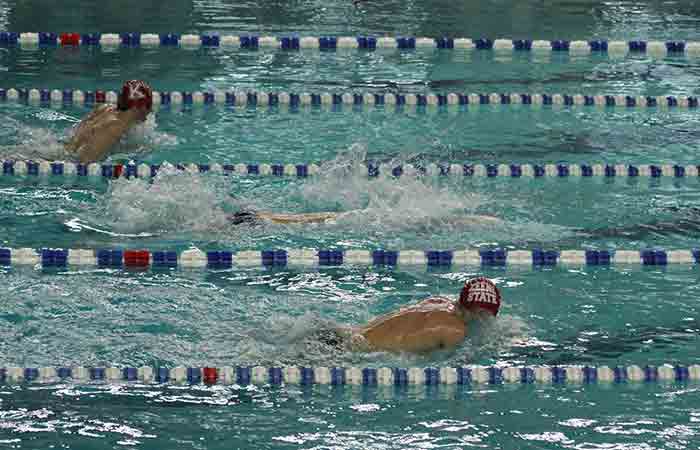
The Challenges of Learning and Perfecting Techniques
Mastering swimming techniques requires precise breathing control, flawless stroke mechanics, and constant efforts to increase efficiency – Read on to discover the intricacies of this physically and mentally demanding sport.
Breathing Techniques
Breathing techniques are an important aspect of swimming. They help swimmers maintain a steady supply of oxygen and improve their endurance in the water. Here are some key breathing techniques used in swimming:
- Bilateral breathing: This involves alternating breathing on both sides during the freestyle/front-crawl stroke, the most popular of all. It helps swimmers develop a balanced stroke and improves overall coordination.
- Exhalation underwater: Swimmers exhale while their face is submerged in the water. This ensures that they quickly inhale when turning to breathe above water, minimizing the time spent out of streamlined position.
- Controlled inhalation: Swimmers take quick inhalations when turning to breathe, making sure not to lift their heads too high or disrupt their body position.
- Breath control drills: These drills focus on building lung capacity and teaching swimmers to hold their breath for longer periods. They include exercises like flutter kick with breath holding and underwater swims.
- Nose breathing drills: Swimmers practice inhaling through their noses and exhaling through their mouths, promoting better control of breath and reducing water intake while swimming.
Stroke Mechanics
Swimming requires mastering various strokes and techniques to be successful. The proper stroke mechanics are crucial in achieving speed, efficiency, and overall performance. Here are some key aspects of stroke mechanics:
- Body Position: Swimmers must maintain a streamlined body position in the water, with their head aligned with their spine and hips elevated.
- Arm Movement: The arms should move continuously, entering the water fingertips first, pulling through to generate power, and exiting smoothly.
- Leg Kick: A strong and coordinated leg kick is essential for propulsion. Swimmers use different types of kicks depending on the stroke being performed.
- Breathing Technique: Proper breathing involves timed inhalation and exhalation while keeping the head low during the stroke cycle.
- Timing and Rhythm: Each stroke has a specific timing pattern that swimmers must master for optimal efficiency.
- Rotation: Generating power through torso rotation helps improve stroke length and overall effectiveness.
Increasing Efficiency and Streamlining
Swimmers constantly work on increasing their efficiency and streamlining in the water. They do this by:
- Perfecting their technique and form
- Improving their body position in the water
- Minimizing drag by reducing unnecessary movements
- Focusing on smooth and fluid strokes
- Increasing their stroke rate without sacrificing technique
- Some even go as far as shaving their hair

FAQs
Is Swimming the Hardest Sport?
Competitive swimming undoubtedly ranks among the most difficult sports and requires elite fitness across many attributes. However, the hardest sport is subjective based on the metrics used and the level of competition. For most purposes, swimming presents immense physical and mental challenges
Swimming is Harder than Running?
Swimming is harder than running in some respects due to the all-over body conditioning and specialized techniques swimming requires, but the low-impact nature makes it less stressful on the body.
Swimming is Harder than Soccer/Football?
While soccer/football requires more explosive power and agility, competitive swimming could be more challenging due to the immense cardiovascular endurance, training volume, and mental focus needed to excel.
How Hard is it to Swim a Mile
For an inexperienced or recreational swimmer, swimming a mile straight can be extremely challenging given the cardiovascular endurance and muscle stamina required, but with proper training focused on building swim-specific strength and efficiency, swimming a mile becomes an achievable goal for most moderately fit people.
Verdict: Depends on Context and Participation Level
In terms of competitive racing and training, swimming represents one of the most physically and mentally demanding sports. Mastering techniques and building endurance takes incredible commitment and work. Swimming success requires intense athleticism.
However, recreationally, swimming can also be highly accessible due to its low-impact nature and adaptability across skill levels. People of any age or fitness can learn swimming fundamentals and enjoy the activity casually with proper instruction.
So, determining whether swimming is “hard” depends significantly on participation level and context. There is no denying it is grueling at the Olympic level, but floating leisurely on a Sunday afternoon has near-universal appeal for a reason. Swimming difficulty exists on a broad spectrum.
Further Reading



